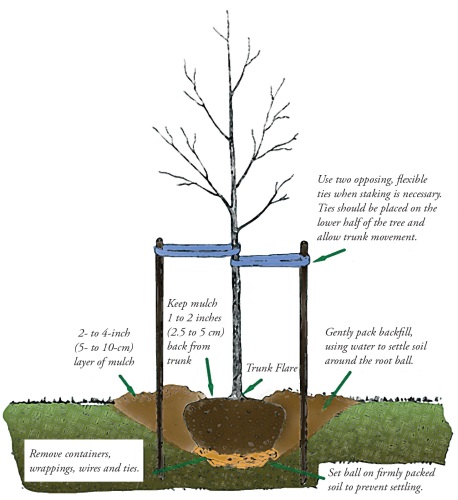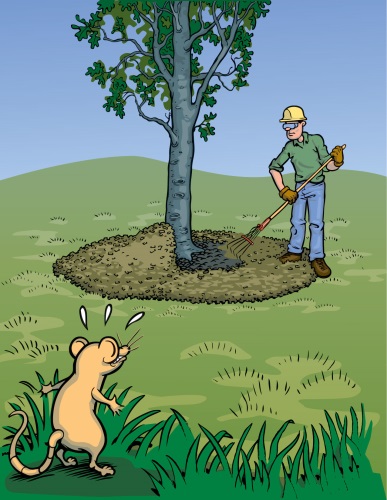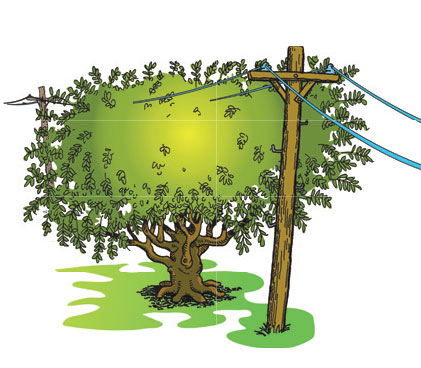Posted on Oct 30 2019
www.isa-arbor.com
Planting a Tree
Planting a tree is a lifelong investment. How well this investment grows depends on the type of tree selected and the planting location, the care provided during planting, and the follow-up care after planting. Getting your new tree off to a healthy start will help the tree mature to its full size and ensures it will provide environmental, economic, and social benefits throughout its lifetime.
Learn more about planting a new tree
When to Plant
Ideally, trees are planted during the dormant season – in the fall after leaf drop or in early spring before budbreak. Weather conditions are cool and allow plants to establish roots in the new location before spring rains and summer heat stimulate new top growth. Healthy balled and burlapped or container trees, however, can be planted throughout the growing season if given appropriate care. In tropical and subtropical climates where trees grow year round, any time is a good time to plant a tree, provided that sufficient water is available.
Planting Stress
Balled and burlapped trees lose a significant portion of their root system when dug at the nursery. As a result, trees commonly exhibit what is known as “transplant shock.” Transplant shock is a state of slowed growth and reduced vitality following transplanting. Container trees may also experience transplant shock, particularly if they have circling or kinked roots that must be cut. Proper site preparation, careful handling to prevent further root damage, and good follow-up care reduces transplant shock and promotes faster recovery.
Steps for Planting

- Locate all underground utilities prior to digging.
- Identify the trunk flare. The trunk flare is where the trunk expands at the base of the tree. This point should be partially visible after the tree has been planted.
- Dig a shallow, broad planting hole. Holes should be 2-3 times wider than the root ball, but only as deep as the root ball.
- Remove the containers or cut away the wire basket. Inspect container tree root balls for circling roots. Straighten, cut, or remove them.
- Place the tree at the proper height. Take care to dig the hole to the proper depth – and no more. If the tree is planted too deep, new roots will have difficulty developing because of a lack of oxygen.
- Straighten the tree in the hole. Before backfilling, have someone view the tree from several directions to confirm it is straight.
- Fill the hole gently, but firmly. Pack soil around the base of the root ball to stabilize it. Fill the remainder of the hole, firmly packing the soil to eliminate air pockets that may dry out roots. Further reduce air pockets by watering periodically while backfilling. Avoid fertilization at the time of planting.
- Stake the tree, if necessary. Studies have shown that trees establish more quickly and develop stronger trunk and root systems if they are not staked at the time of planting.
- Mulch the base of the tree. Mulch is organic matter spread around the base of a tree to hold moisture, moderate soil temperature extremes, and reduce grass and weed competition.Learn more about proper mulching
- Provide follow-up care. Keep the soil moist, but not water-logged. Water trees at least once a week, barring rain, and more frequently during hot, windy weather.
Right Tree – Right Place
 Planning before planting can help ensure that the right tree is planted in the right place. Proper tree selection and placement enhance your property value and prevent costly maintenance trimming and damage to your home. If you have any more questions, please contact your local ISA Certified Arborist or tree care professional, utility company, local nursery, or county extension office.
Planning before planting can help ensure that the right tree is planted in the right place. Proper tree selection and placement enhance your property value and prevent costly maintenance trimming and damage to your home. If you have any more questions, please contact your local ISA Certified Arborist or tree care professional, utility company, local nursery, or county extension office.

Mulching
Mulches are materials placed over the soil surface to maintain moisture and improve soil conditions. Mulching is one of the most beneficial acts a homeowner can do for the health of a tree. However, improper mulching materials and practices may have little, or even negative, impact on the trees in your landscape.
Learn more about proper mulching techniques
Avoiding Tree and Utility Conflicts
 Determining where to plant a tree is a decision that should not be taken lightly. Many factors should be considered prior to planting. When planning what type of tree to plant, remember to look up and look down to determine where the tree will be located in relation to overhead and underground utility lines.
Determining where to plant a tree is a decision that should not be taken lightly. Many factors should be considered prior to planting. When planning what type of tree to plant, remember to look up and look down to determine where the tree will be located in relation to overhead and underground utility lines.
Learn more about planting trees near utilities
Overhead Lines
Overhead utility lines are easy to spot, yet often overlooked. Planting tall-growing trees under or near these lines eventually requires your utility provider to prune them to maintain safe clearance from the wires. This pruning may result in the tree having an unnatural appearance. Periodic pruning can also lead to a shortened life span for the tree.
Tall-growing trees near overhead lines can cause service interruptions when trees contact wires. Children or adults climbing in these trees can be severely injured or even killed if they come in contact with the wires. Proper selection and placement of trees in and around overhead utilities can eliminate potential public safety hazards, reduce expenses for utilities and their customers, and improve landscape appearance.
Underground Lines
Trees consist of much more than what you see above ground. Many times, the root area below ground is larger than the branch spread. Many of the utility services provided today run below ground. Tree roots and underground lines often coexist without problems. However, trees planted near underground lines could have their roots damaged if the lines are dug up for repair.
The greatest danger to underground lines occurs during planting. Before you plant, make sure that you are aware of the location of any underground utilities. To be certain that you do not accidentally dig into any lines and risk serious injury or a costly service interruption, call your utility company or utility locator service first. Never assume that these utility lines are buried deeper than you plan to dig.

